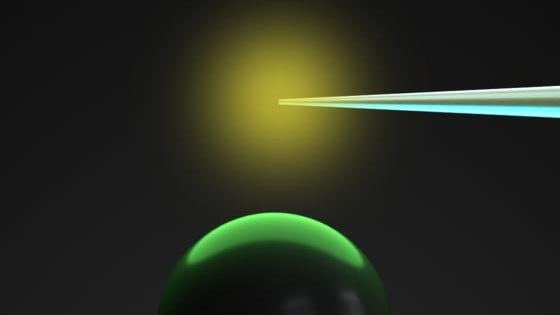Scientists at Johns Hopkins Medicine have built a minimal synthetic cell that follows an external chemical cue and demonstrates a fundamental principle of biology called “symmetry breaking.” This achievement, aimed at understanding how cells move and creating new ways to shuttle drugs through the body, marks a significant step forward in the field of synthetic biology.
The findings, published on June 12 in Science Advances, showcase the potential of engineered cells to mimic and control biological processes, paving the way for future applications in targeted drug delivery and environmental sensing.
The Importance of Symmetry Breaking in Biology
Symmetry breaking is a crucial step that precedes cell movement. It occurs when a cell’s molecules, initially arranged symmetrically, reorganize into an asymmetric pattern or shape in response to stimuli. This process is analogous to migrating birds breaking symmetry when they shift into a new formation in response to environmental cues like sunlight or landmarks. On a microscopic level, immune cells sense chemical signals concentrated at an infection site and break symmetry to traverse a blood vessel wall and reach the infected tissue.
“The notion of symmetry breaking is crucial to life, impacting fields as diverse as biology, physics and cosmology,” says Shiva Razavi, Ph.D., who led the research as a graduate student at Johns Hopkins and is now a postdoctoral fellow at Massachusetts Institute of Technology. “Understanding how symmetry breaking works is key to unlocking the fundamentals of biology and discovering how to harness this information to devise therapeutics.”
Engineering a Synthetic Cell with Chemical-Sensing Ability
For this study, scientists created a giant vesicle with a double-layered membrane – a bare-bones, simplified synthetic cell or protocell made of phospholipids, purified proteins, salts, and ATP that provides energy. Nicknamed “the bubble,” the protocell was engineered with a chemical-sensing ability that prompts it to break symmetry, changing from a nearly perfect sphere to an uneven shape. The system was specifically designed to mimic the first step in an immune response, able to signal for neutrophils to attack germs based on proteins they sense around them.
“Our study demonstrates how a cell-like entity can sense the direction of an external chemical cue, mimicking the conditions you would find in a living organism,” Razavi says. “By building a cell-like structure from scratch, we can better identify and understand the essential components required for a cell to break symmetry in its most simplified form.”
The researchers activated the vesicle’s chemical-sensing ability by planting two proteins that act as molecular switches – called FKBP and FRB – within the synthetic cell. When the scientists introduced a chemical, rapamycin, outside of the bubble cell, FKBP moved to the membrane to bind with FRB, triggering a process called actin polymerization, which resulted in a rod-like structure that put pressure on the cell membrane, causing it to bend.
Looking ahead, the researchers aim to equip these synthetic cells with the ability to move toward a desired target. “The idea is that you can package anything you want into these bubbles — protein, RNA, DNA, dyes or small molecules — tell the cell where to go using chemical sensing, and then have the cell burst near its intended target so that a drug can be released,” says senior author Takanari Inoue, Ph.D., professor of cell biology and director of the Center for Cell Dynamics at Johns Hopkins Medicine.


